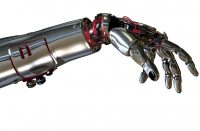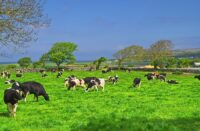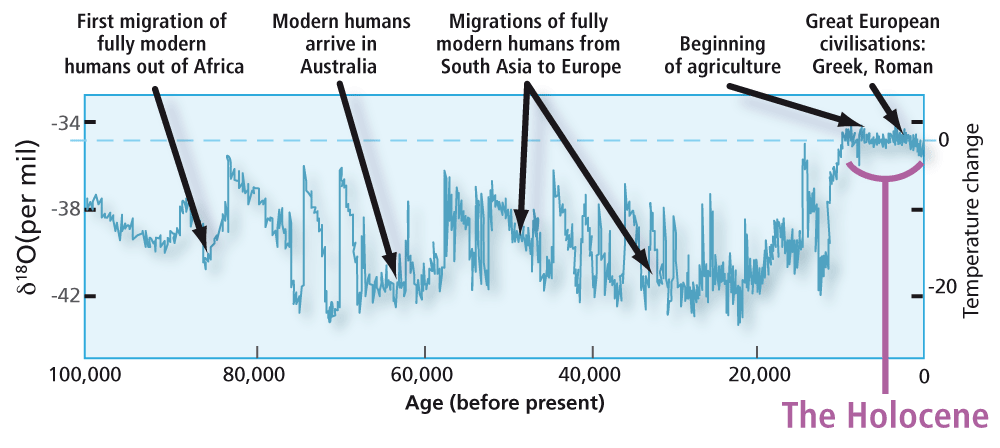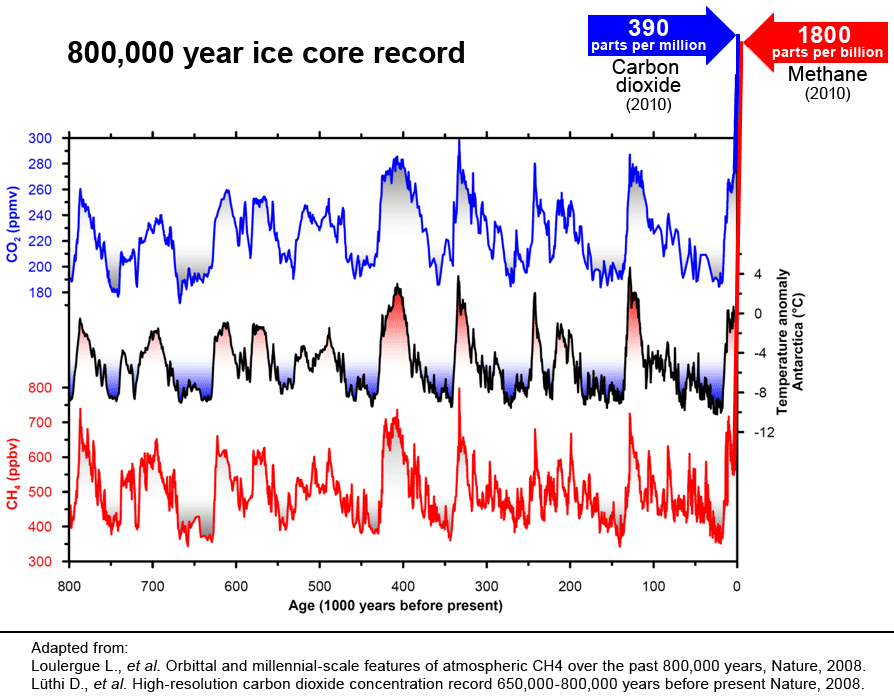In nature, many complex processes must occur to guarantee the sustainability of life. The earth itself is a system of interaction between the physical, chemical and biological processes that take place within it.
Within the Earth System, which consists of the land, seas, atmosphere, and poles, we find many natural cycles occurring, such as the carbon cycle, water cycle, nitrogen, phosphorus and sulphur cycles, and many others.
All these cycles and processes have allowed life on earth to flourish for billions of years; and human life has been part of that story for roughly 150,000–200,000 years. It is only in the last 10,000 years or so that a stable-climate epoch known as the Holocene, when average fluctuations in temperature remained within 1 degree, allowed for settled agricultural communities to develop, thrive and multiply to the level of human development we have today.
Humans have always had an impact on their surroundings; but that is true of all life, as life is part of, not detached from, the Earth System. However, it was only since the Industrial Revolution, beginning about 1750, that we began to witness the impact of human activity affecting the global system rather than just being localised. The rise of industry is interlinked with the rise and development of the capitalist system.
Over the past couple of decades there has been what Ian Angus, author of Facing the Anthropocene (and guest speaker for this year’s Connolly Memorial Lecture in May), refers to as a revolution in science—that is, the development of Earth System science, where the sum of all the parts within the system, which individually have been studied over the centuries, have been combined to a point where we now have a fuller understanding of the interactivity, interconnectedness and interdependence of the natural cycles and processes on the planet.
What Earth System scientists also conclude is that life and human development have an effect on the natural cycles—water, carbon, etc.—and that our own social and economic systems are “embedded” in the system. What they have also concluded is that, “in many cases, the human systems are now the main drivers of change in the Earth system.”
So human activity is not just having an impact on climate change but is in fact creating a global change in “atmospheric circulation, ocean circulation, the carbon cycle, the nitrogen cycle, the water cycle and other cycles, sea-ice changes, sea-level changes, food webs, biological diversity, pollution, health, fish stocks, and more.” This global change has adverse effects on the Earth System, threatening the sustainability of civilisation as we know it.
This has led those in the field of Earth System science, headed by the International Geosphere-Biosphere Programme, to make the formal recommendation in 2000 that we have left the Holocene epoch and have entered a new epoch—the Anthropocene: the period during which human activity has been the dominant influence on the Earth System. They state that “the magnitude, spatial scale, and pace of human-induced change are unprecedented in human history and perhaps in the history of the Earth. The Earth system is now operating in a ‘no-analogue state’.” We cannot compare it with previous times, because it is unlike anything that has gone before.
There has been debate about when the Anthropocene epoch began (the birth of agricultural societies or the Industrial Revolution, for example). However, a consensus has been found, thanks to the research conducted by Earth System scientists, that the period from 1950 onwards really encapsulates the beginning of the Anthropocene epoch.
The reason for this is the accelerated pace at which production and consumption, the “socio-economic trends,” have developed, with their impact on the natural cycles and processes within the Earth System. This period from 1950 to the present is known as the Great Acceleration, as illustrated in the two diagrams here.
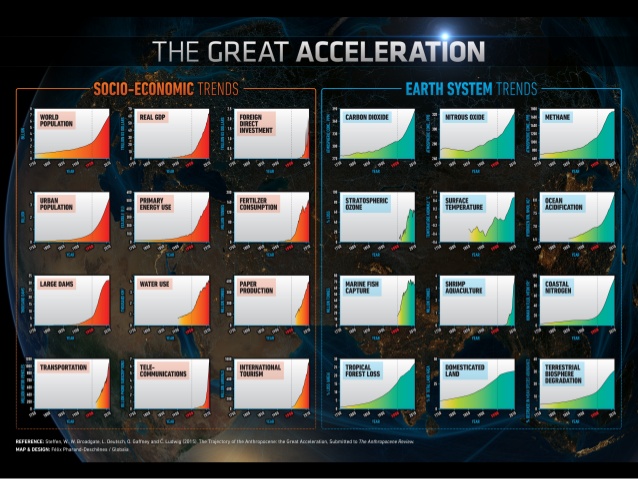
It would be wrong to reach the conclusion that what has transpired is to be blamed on the entire human race, that it is in our nature, as a species, to act in a destructive way towards all life on the planet. It would also be false to conclude that the acceleration that has taken place is due to population growth, that there are too many people living on the planet.
To counter the second conclusion first: the consumption of energy, food, water and other basic needs and the demand for a range of goods and services is vastly higher in the more affluent regions of the developed countries of the global north than of those living in the underdeveloped countries of the global south. So to blame climate change and global change on everyone equally, or even to blame it on the countries with high population growth, generally those in the global south, is to totally obscure the reality of uneven development and consumption. Clearly it is the advanced capitalist countries that have put their foot on the pedal.
Global change is not just a numbers game. There are enough resources to meet the basic needs of the 7 billion people living on this planet; what is totally skewed is how resources and wealth are employed and distributed, how those who own and control them get to make the decisions on how they are utilised and distributed.
This is not due to a theory of human nature but to the system in which human nature and human development has proceeded. The system that has existed for the past three centuries, more or less, is the capitalist system. It is the system itself, the owners of capital, its beneficiaries and those who uphold capitalism that we need to target, to lay the blame on.
In nature we find many complex cycles. The foundation and the longevity of cycles is due to the replenishing and recycling that takes place within these processes. Within the human body similar processes and cycles take place to allow humans to have the lifespan that we have. Without the recycling process, life would be stunted. The respiratory system, for example, is a biological system consisting of specific organs and structures used for gas exchange in animals and plants, to facilitate the inhalation of oxygen and the exhalation of carbon dioxide.
For life to flourish there must exist an exchange of equivalents, a balance of use and waste, where each use creates waste and where waste in one system creates use in another. Everything in our planet is formed by the balance of individual systems, incorporated in the Earth System, which has created the conditions for a stable earth, allowing humankind to expand their horizons.
Each system is cyclical in nature. If it were not so, the evolutionary processes that have taken place over the lifespan of the earth would not have been able to develop as they have.
Capitalism and the capitalist system run counter to the natural cycles of the planet. Its nature is in the form of a spiral. What this means in essence is that the capitalist system, within which the majority of the inhabitants of the earth exist, exhibits a use and a waste function without completing the cycle. The system makes use of resources without an equivalent use and replenishing of its waste product; therefore it produces a non-equivalence of exchange, an imbalance.
Capitalism functions in the form of M < Mʹ, where capital investment (M) must be less than what it gets in return for that investment (Mʹ). The difference between M and Mʹ is profit.
Profit, in commodity production (C), is the extraction of surplus value from labour power, paying labour less than the value of what labour produces. In finance monopoly capitalism (M–Mʹ), commodity production doesn’t need to take place. It is based on speculation of assets. However, without a commodity production base (M–C–Mʹ), without the super-exploitation of workers in the global south, finance, investments and speculative economies would not be able to function and dominate as they do.
So, in the instances where M = Mʹ (nil profits or break-even) and M > Mʹ (a loss), capitalists and the capitalist system will find themselves in a state of crisis. Capitalism’s main function is to produce profit for the owners of capital. In this sense, capitalism and capitalists see themselves as removed from the Earth System, because their function is to continually accumulate profit. Where this is not possible, capitalism enters a state of crisis, which extends into a crisis for working people, with job losses, austerity measures, and all the rest.
For capitalism to be in the M < Mʹ state it must continually seek to exploit both human and natural resources in its quest to accumulate profit. Therefore it is necessary to externalise environmental costs and to employ even more exploitative labour practices. We have witnessed this phenomenon, especially over the last forty years, with outsourcing and foreign direct investment moving to the global south, where labour and environmental laws, protections and practices are less stringent, or non-existent. They use their strength, their influence, their military, their demands on these countries. The development of capitalism, of finance and welfare economies since the 1950s, directly relates to the Great Acceleration.
Capitalism is not a system based on cycling and recycling, a balanced system, and can never be formed to function that way, because its nature is to spiral, to accumulate more than it began with, to use up more and more resources so as to generate greater growth, greater profits.
Because of its nature, and based on the large amount of evidence available on climate and global change, capitalism has spiralled out of control. Quite simply, the Earth System and the capitalist system are incompatible. One must go.
Resources and diagrams
International Geosphere-Biosphere Programme, at https://tinyurl.com/mteep42.
Ian Angus, Facing the Anthropocene: Fossil Capitalism and the Crisis of the Earth System (New York: Monthly Review Press, 2016)



